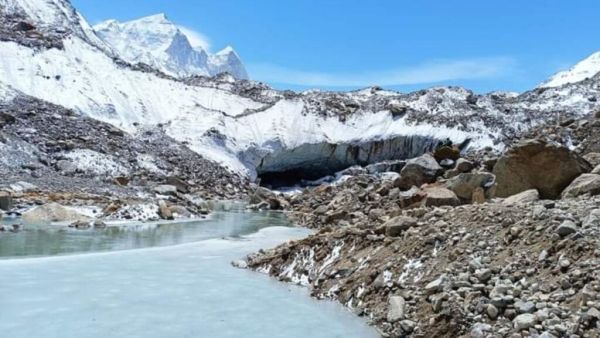
The World Meteorological Organisation’s (WMO) 2024 State of Global Water Resources concludes that the planet’s water cycle is increasingly erratic, swinging violently between extreme droughts and devastating floods. Asia, and India in particular, stand at the epicentre of these disruptions, facing both critical challenges and opportunities to shape the future of global water security.
For the sixth consecutive year, the world’s hydrological systems have been thrown out of balance. Only roughly one-third of the planet’s major river basins experienced ‘normal’ water conditions in 2024, a year marked as the hottest on record. This imbalance threatens global economic stability and human well-being, with 3.6 billion people already facing inadequate water access for at least a month each year. This figure is projected to exceed five billion by 2050.
Asia: A land of contrasts
Asia emerged in 2024 as a continent of contrasts. Many of its major river basins, including the Ganga, Godavari, and Indus, saw above-normal river discharge. This influx, fuelled partly by a strong El Niño and excessive rainfall, brought relief to regions battling water scarcity, recharging groundwater reserves and reservoirs in northern India and Pakistan.
However, increased river flow comes with challenges. Flooding has strained infrastructure and displaced communities across countries, underscoring the risks of managing sudden water abundance amid a backdrop of long-term water insecurity.
India’s monsoon systems, traditionally relatively stable, are undergoing rapid change due to rising atmospheric moisture linked to global warming. Severe rainfall events triggered deadly landslides and floods in Kerala, Himachal Pradesh, Uttarakhand, and Jammu and Kashmir, revealing gaps in preparedness and infrastructure resilience.
Asia’s water security is intricately tied to the Himalayan glaciers, often called the ‘Third Pole.’ The report notes 2024 as the third consecutive year of massive glacier mass loss globally. A staggering 450 billion tonnes of ice melted. That equals an amount capable of filling 180 million Olympic swimming pools. This melt adds to global sea-level rise and increases the risks of flooding along Asia’s vast coastlines.
Glaciers in the Himalayas and Tian Shan are retreating rapidly, with 23 out of 24 glaciers assessed showing continued mass loss. This retreat threatens to disrupt the delicate hydrological balance feeding vital river systems that support hundreds of millions of people in India, Pakistan, Nepal, and Bangladesh. As glaciers approach their ‘peak water’ point, the eventual decline in runoff may severely impact agriculture, industry, and drinking water supplies.
The human cost
The Asia-Pacific region faced catastrophic extreme weather in 2024. Tropical cyclones and record-breaking rains resulted in over 1,000 deaths and widespread displacement. The floods in Nepal alone killed hundreds and caused huge economic losses, though an improved early warning and anticipatory action framework helped reduce casualties.
These extreme events expose critical vulnerabilities in infrastructure and disaster preparedness across densely populated areas. From typhoons battering the Philippines to monsoonal floods in Bangladesh and India, the stakes are high and call for investment in adaptive capacity and rapid response systems.
WMO Secretary-General, Celeste Saulo emphasised the urgent need for better data and collaboration: “Continued investment and enhanced collaboration in data sharing are vital to close monitoring gaps. Without data, we risk flying blind.”
For India and its neighbours, this translates into a vital call to strengthen hydrological monitoring networks, improve early warning systems, and foster cross-border cooperation on shared water resources. The intertwined nature of Asia’s river basins demands unprecedented regional coordination to manage the twin extremes of too much and too little water.
As climate change continues to intensify, Asia’s water crisis will serve as a global benchmark. How effectively the region invests in infrastructure, scientific monitoring, and cooperative governance will shape the future of billions and influence worldwide adaptation efforts.
Key findings
· It was wetter than normal over Kazakhstan and Southern Russia, Pakistan and Northern India, Southern Iran, and North-Eastern China.
· In 2024, rivers had above- to much-above-normal discharge conditions across parts of Asia, including Kazakhstan and Russia.
· Major basins such as the Ganges, Godavari, and Indus experienced above- to much-above normal conditions.
· In the Middle East and Central Asia, lake levels were much below normal.
· Typhoon Yagi was one of the deadliest extreme events in South-East Asia in 2024.
· Afghanistan, Iran and Pakistan were badly affected by intense spring rainfalls in 2024.
· Record-breaking precipitation in late September of 2024 caused dramatic flooding and landslides in Nepal.
· Extreme rainfall on July 30 in Kerala region triggered extreme landslides, killing 385 people.
· In April 2024, Dubai was hit by its heaviest rainfall in 75 years, over a year’s worth of rain (255 mm) in 24 hours.